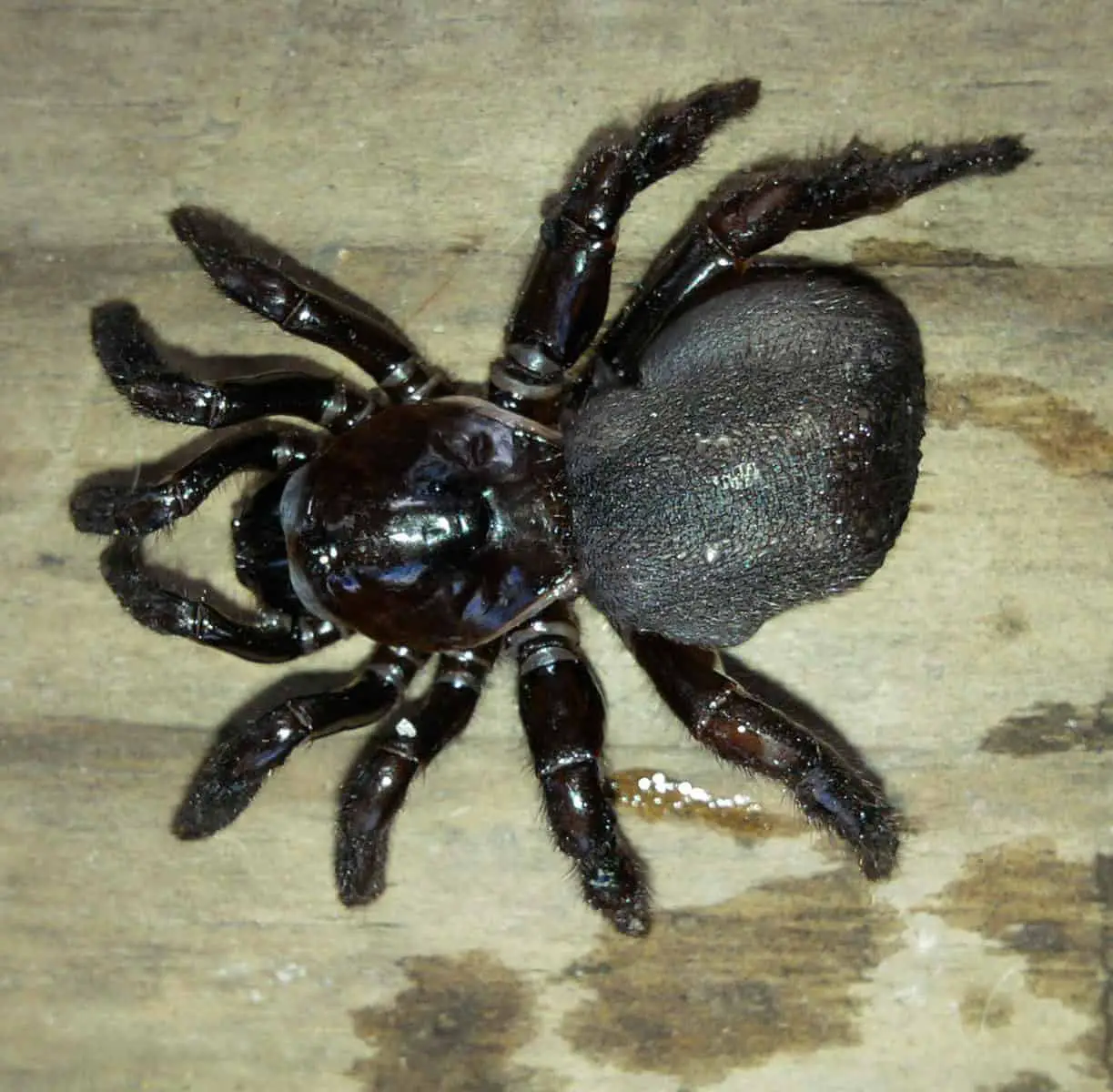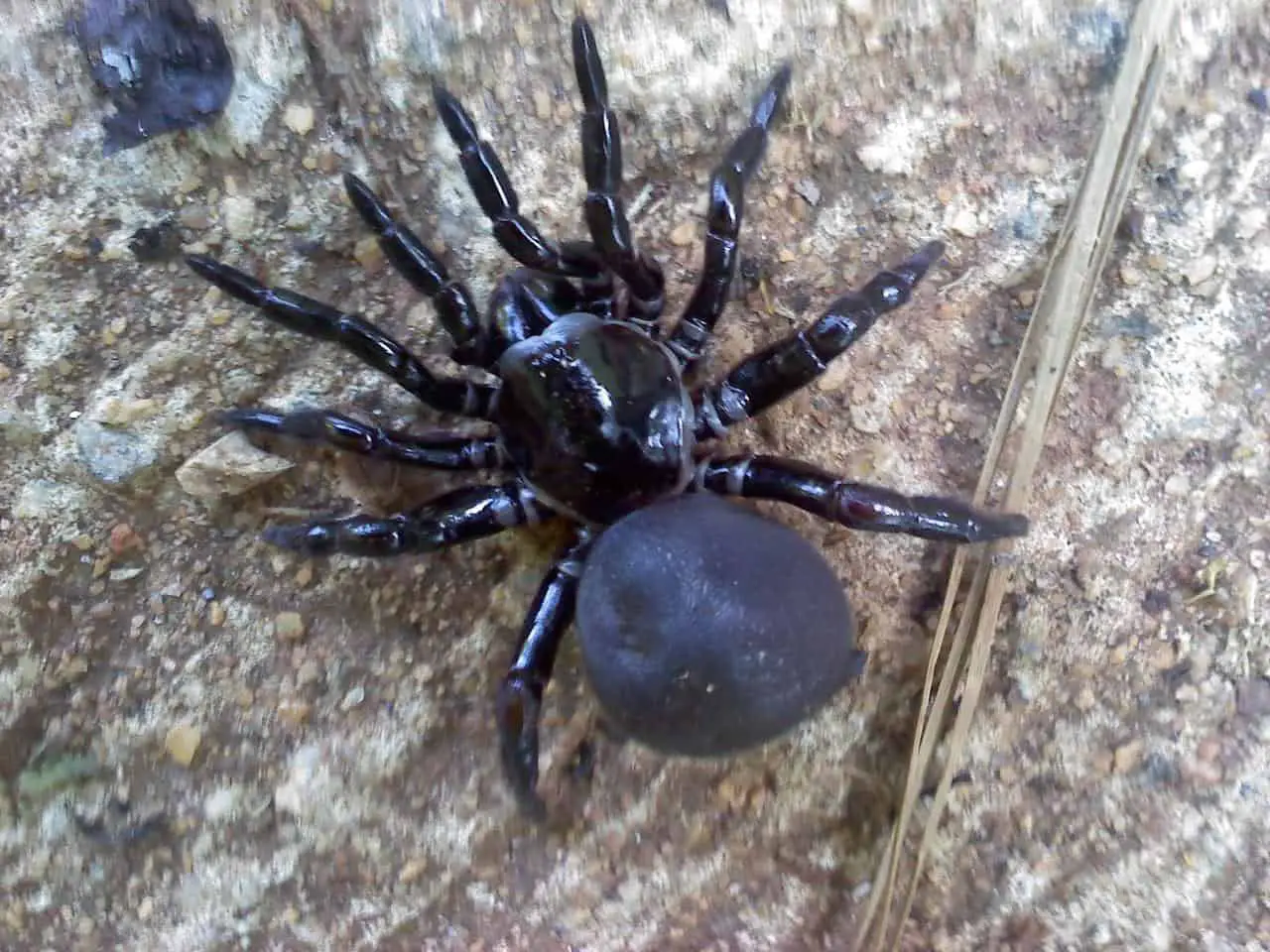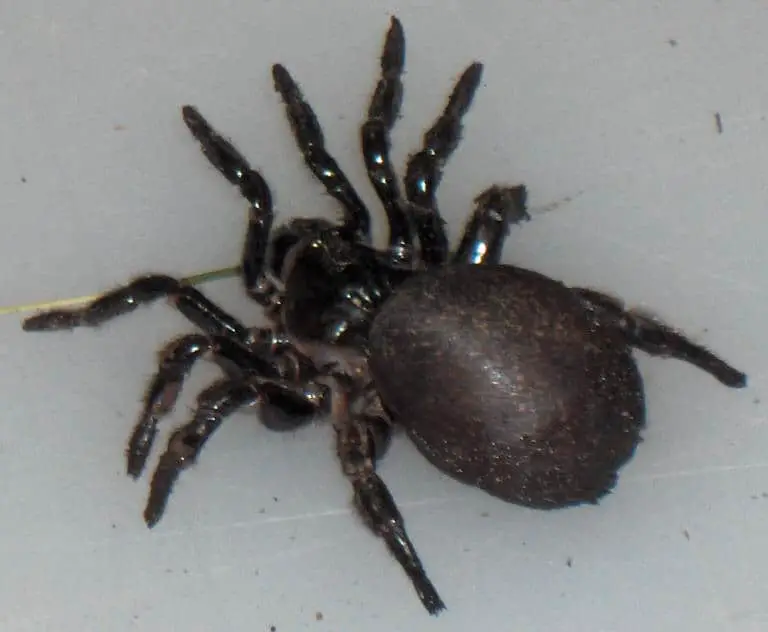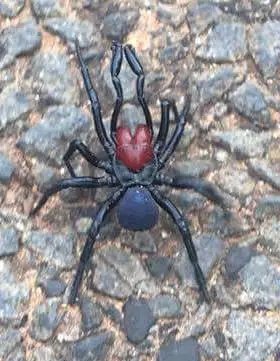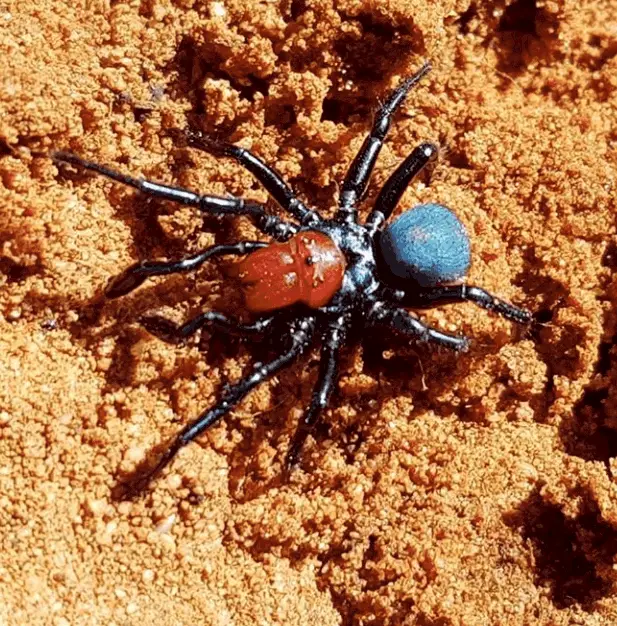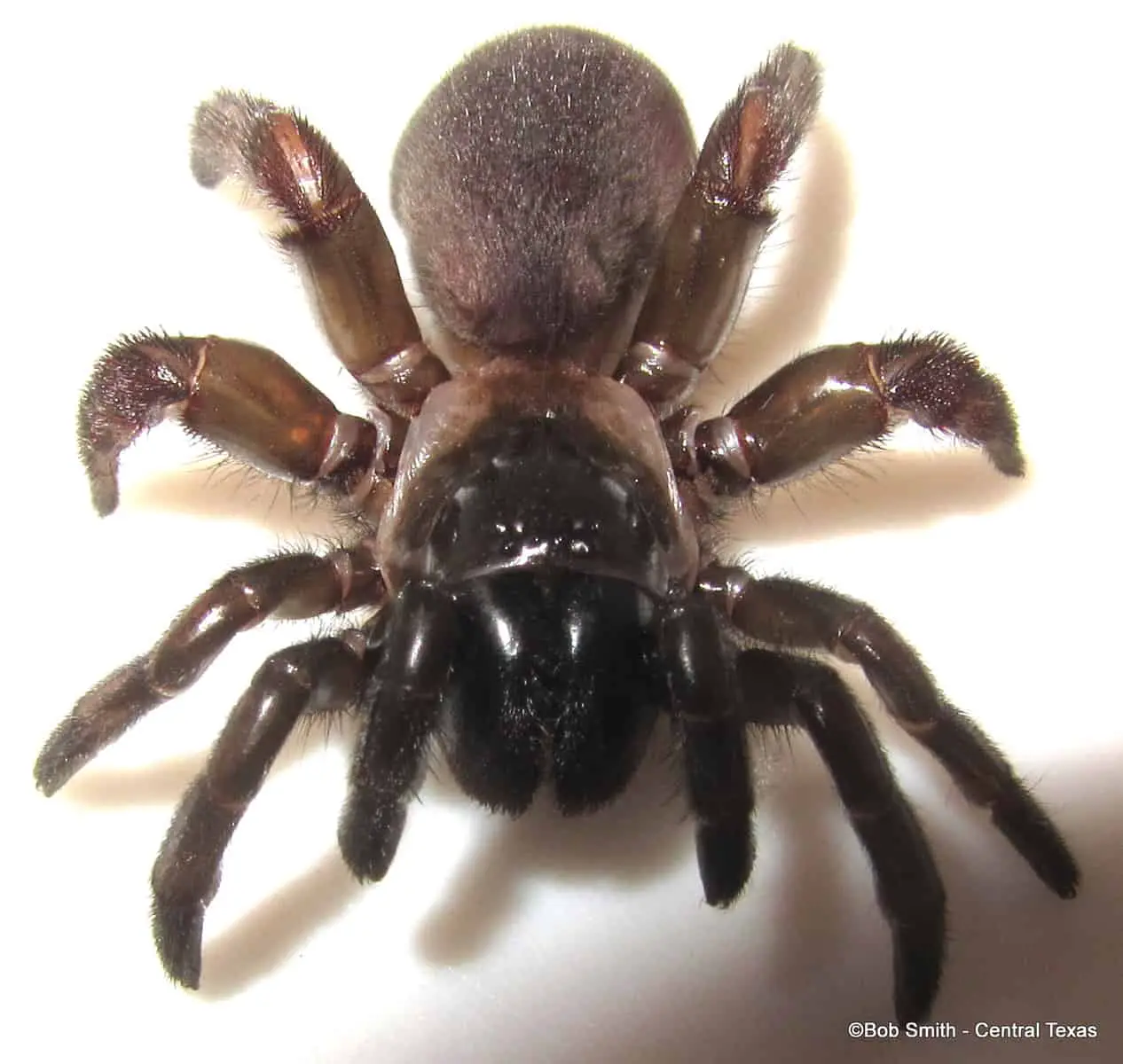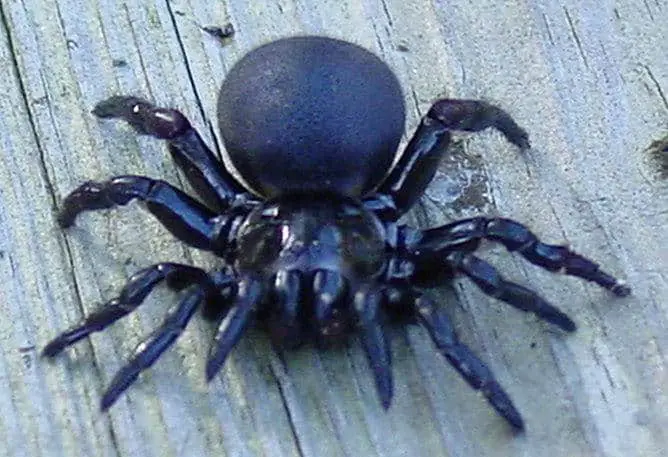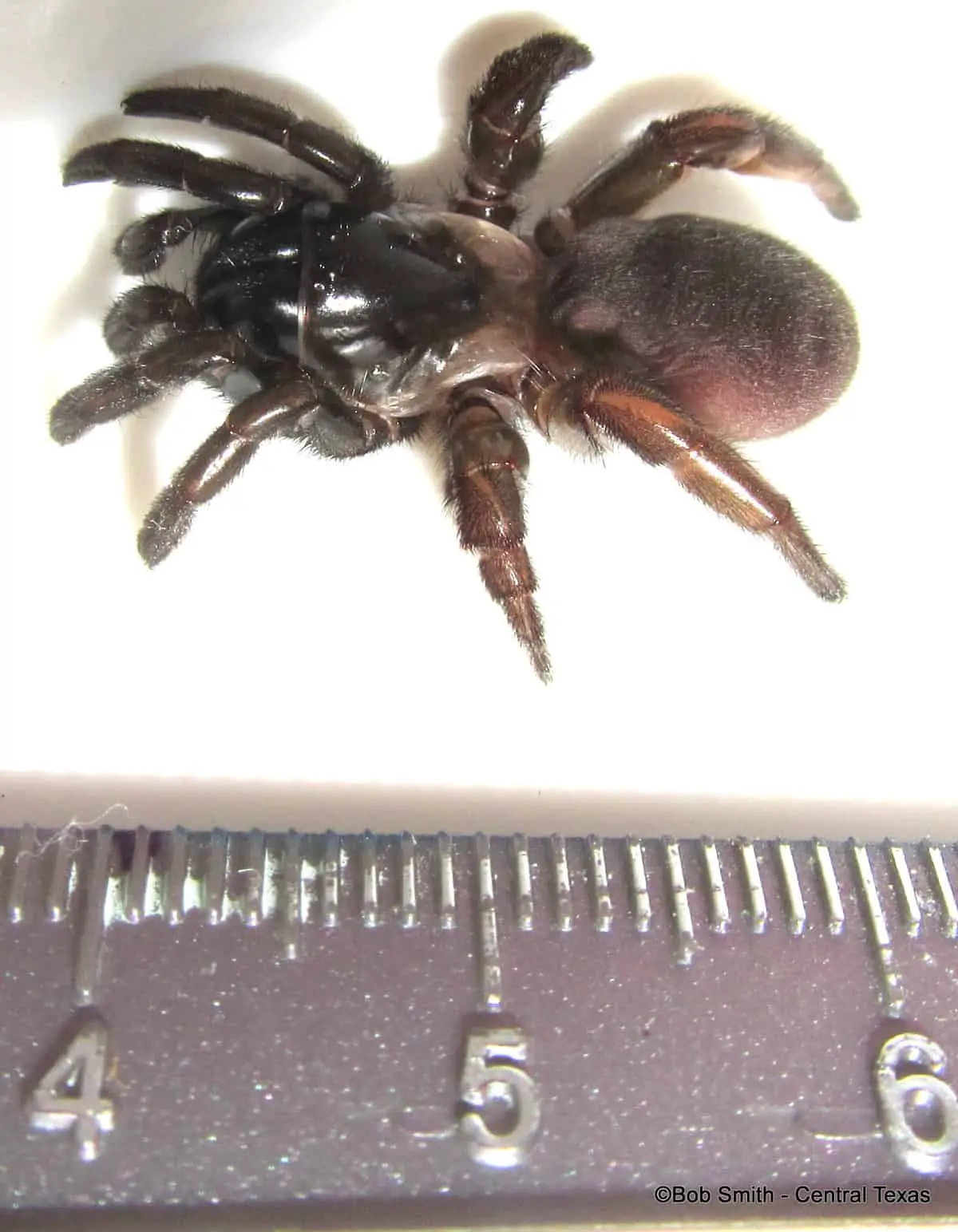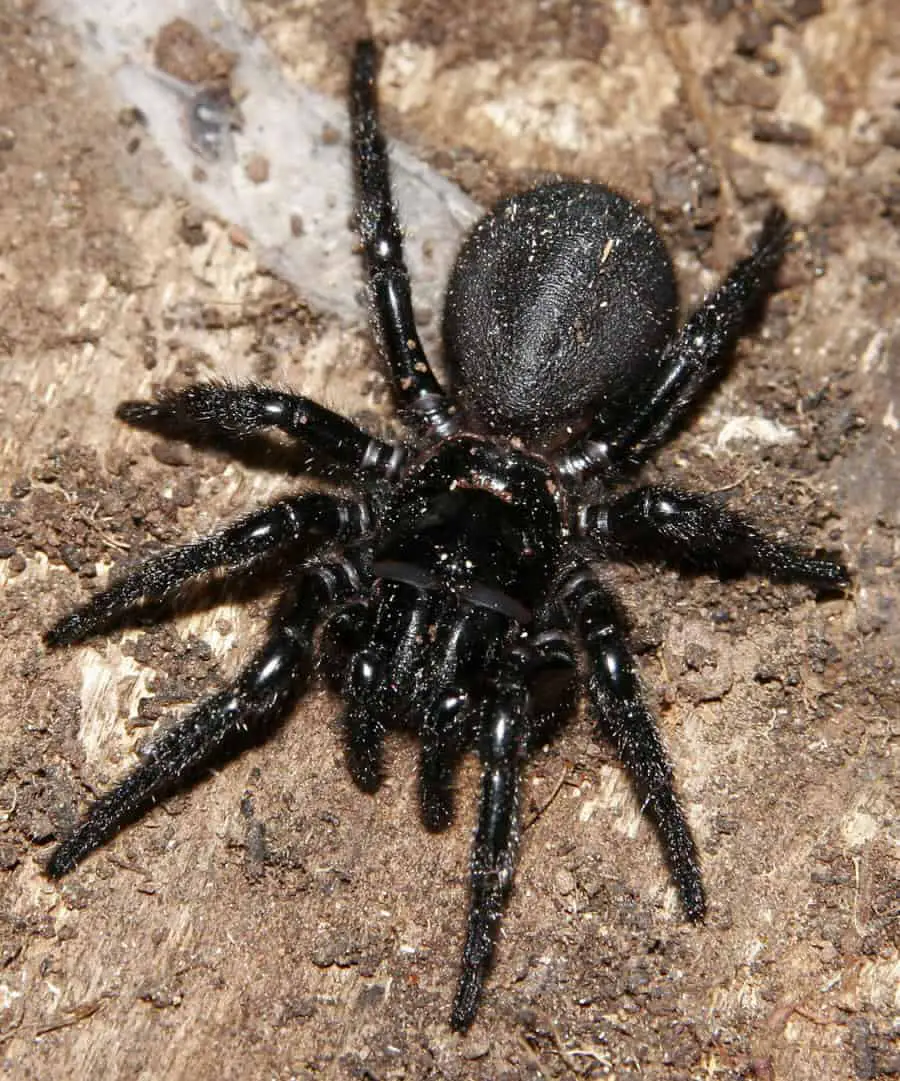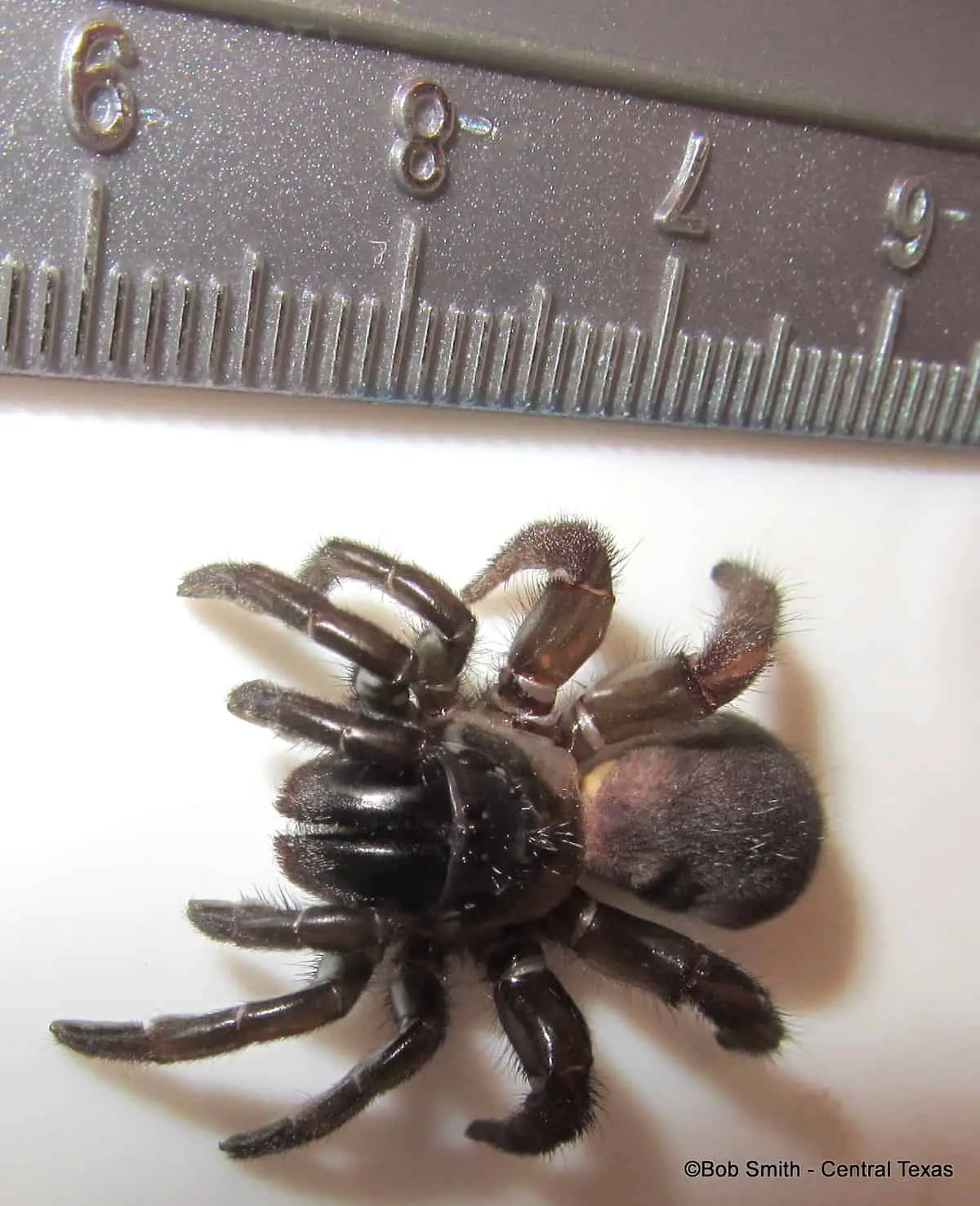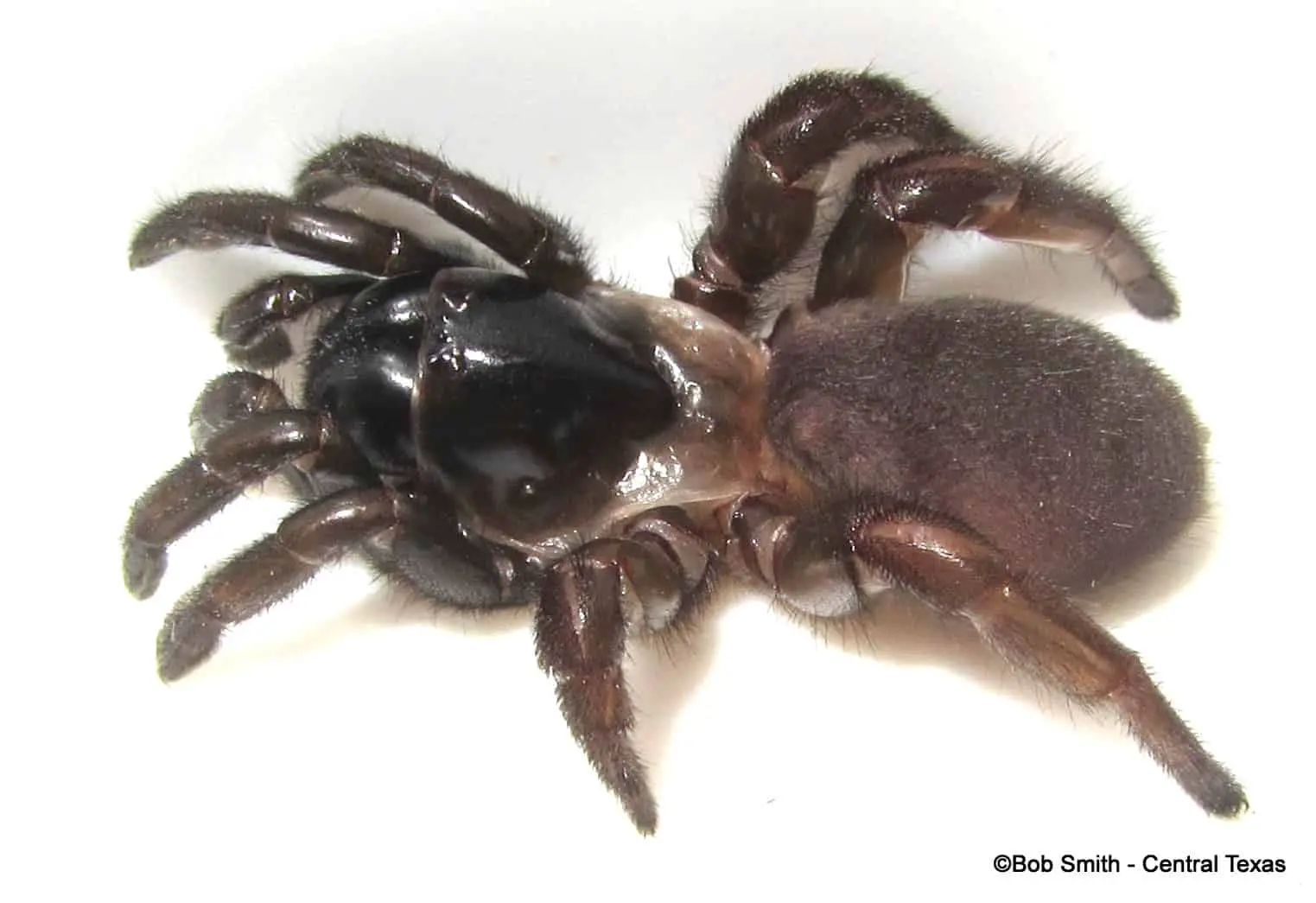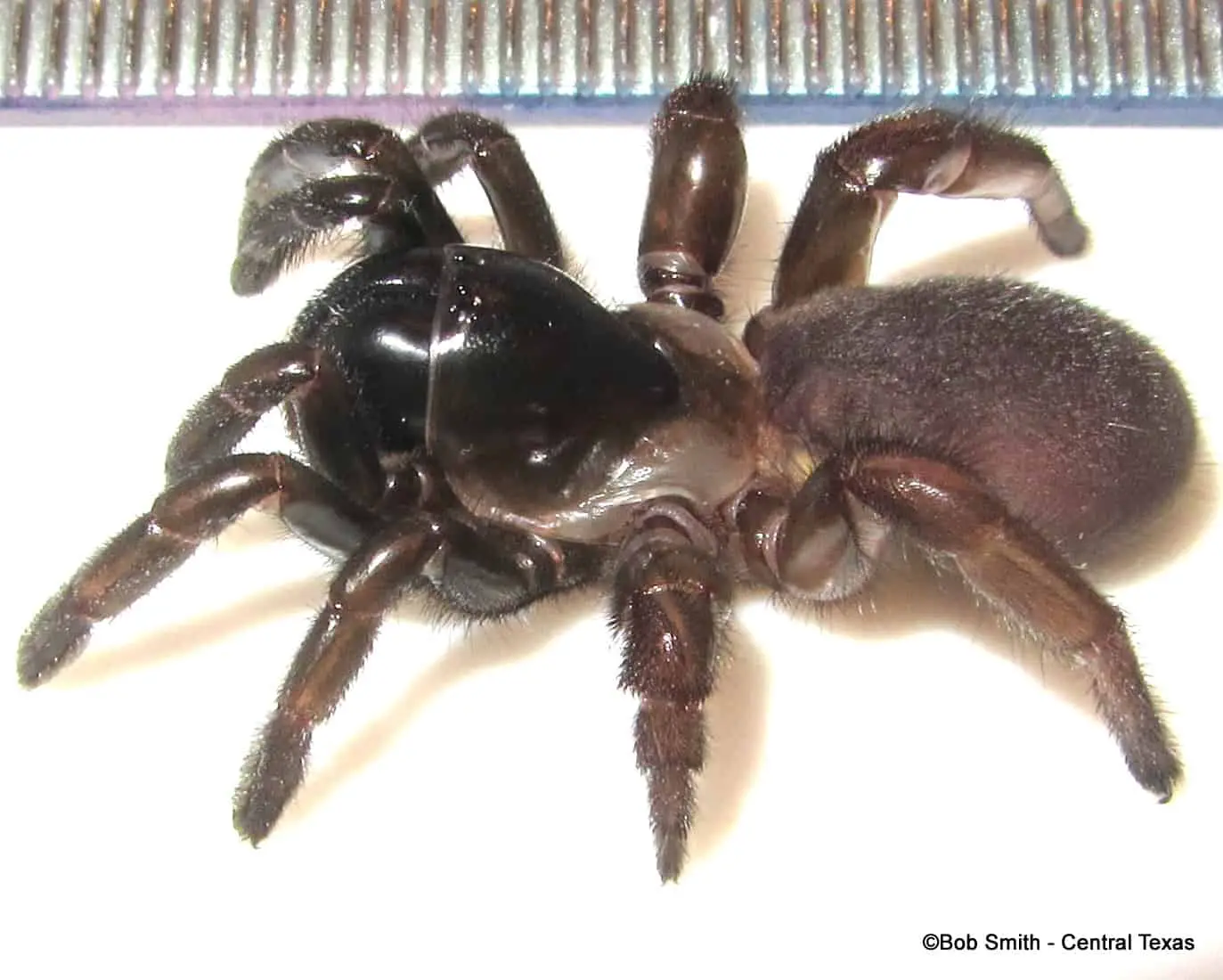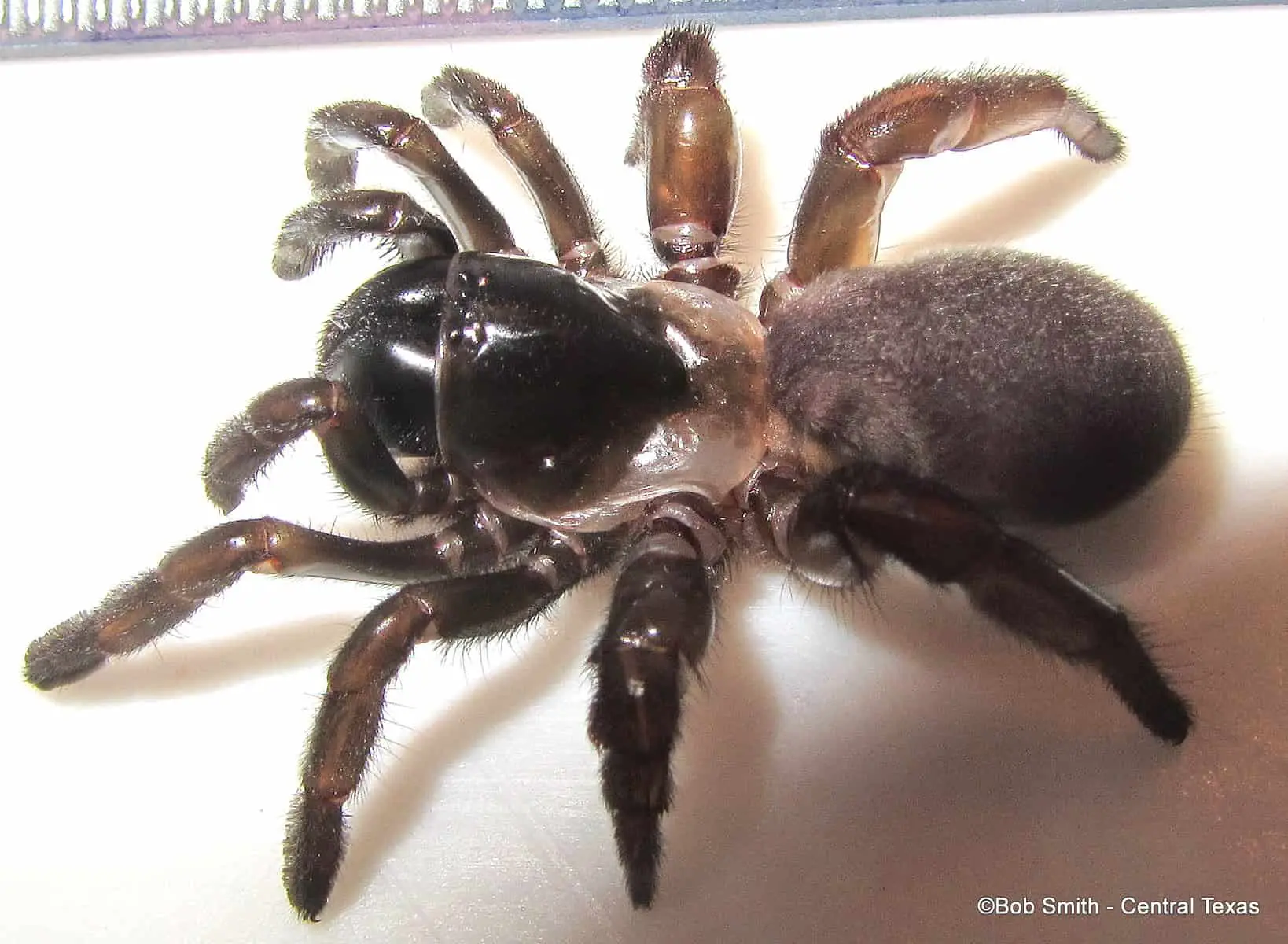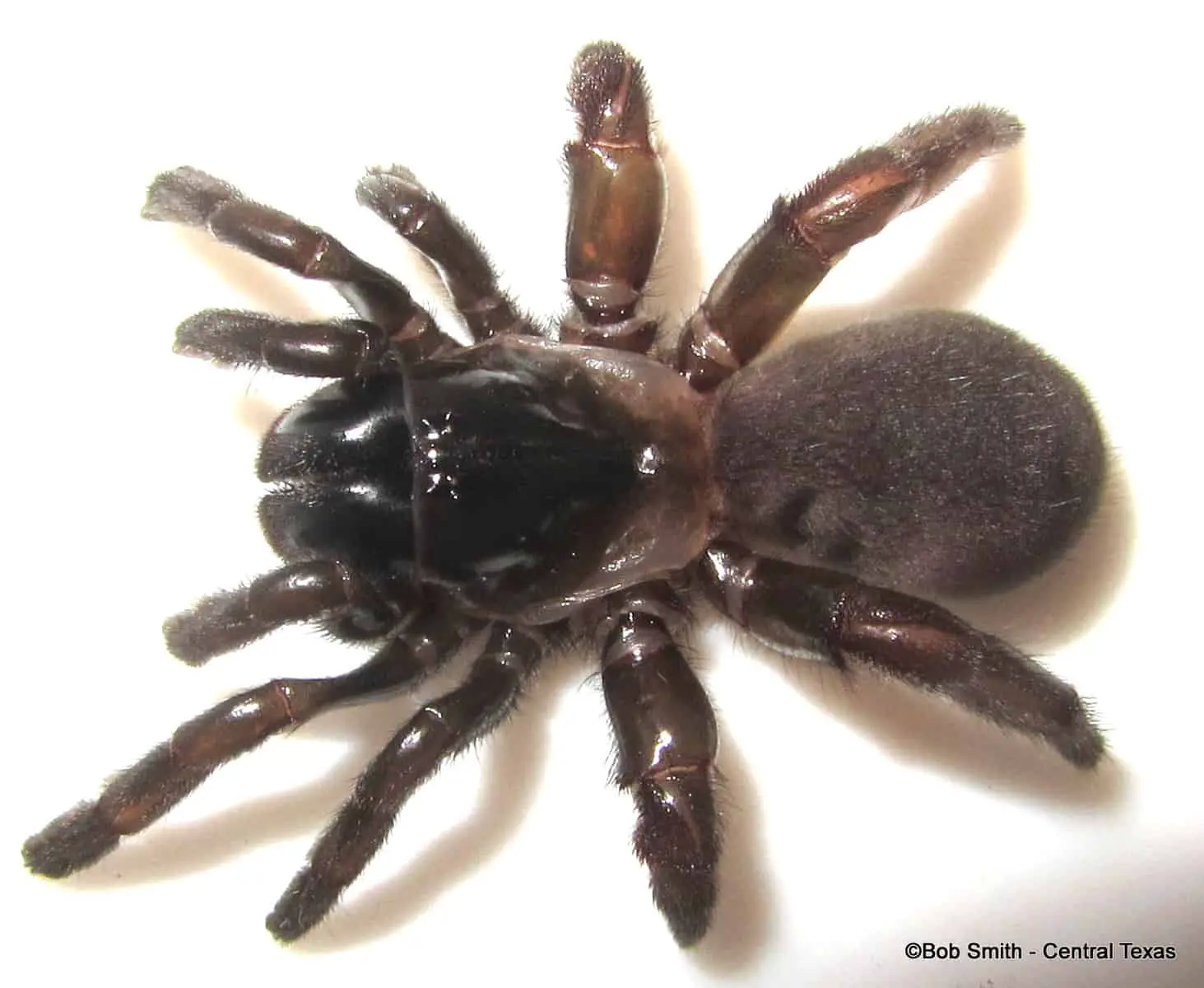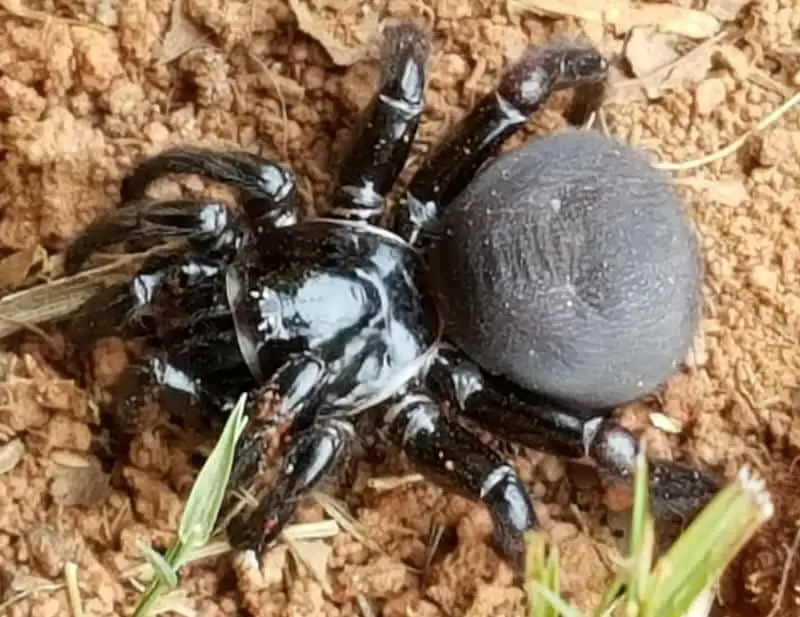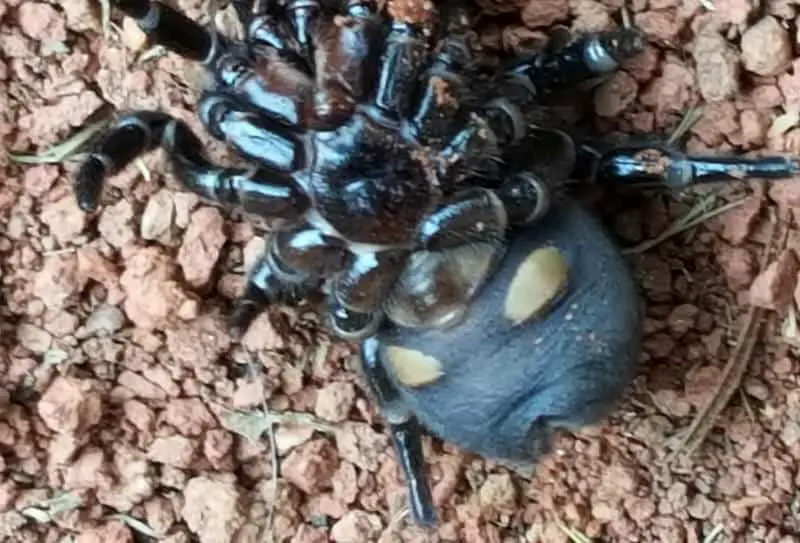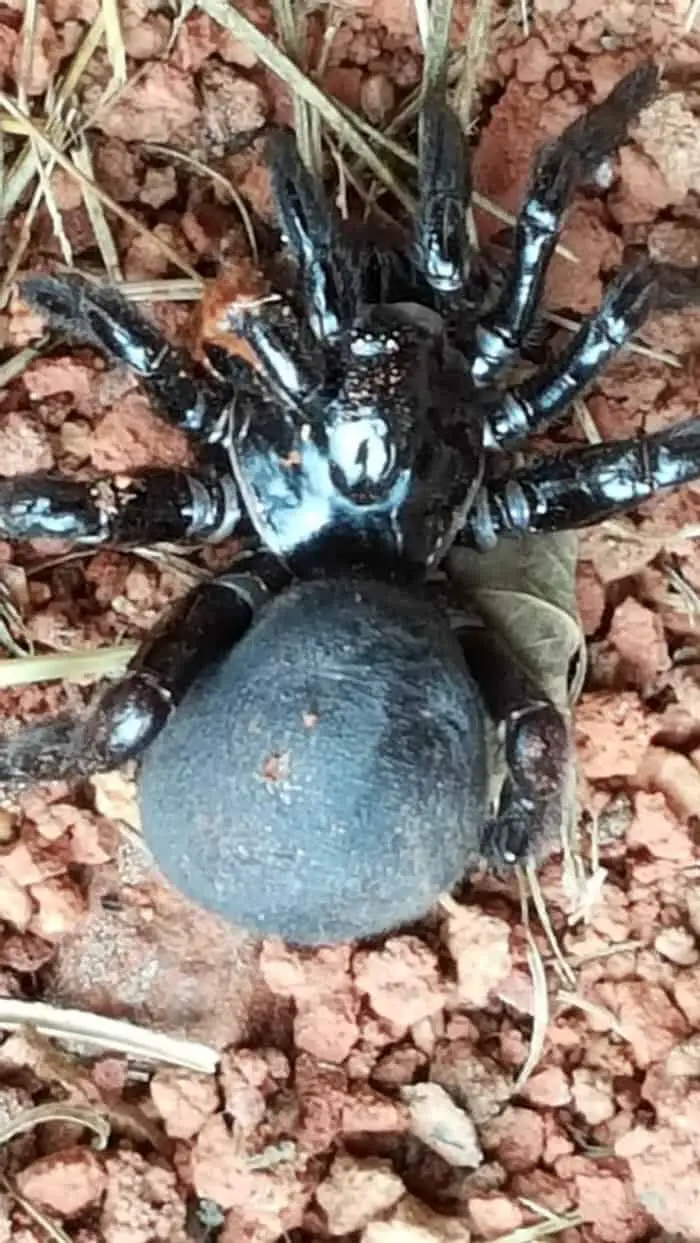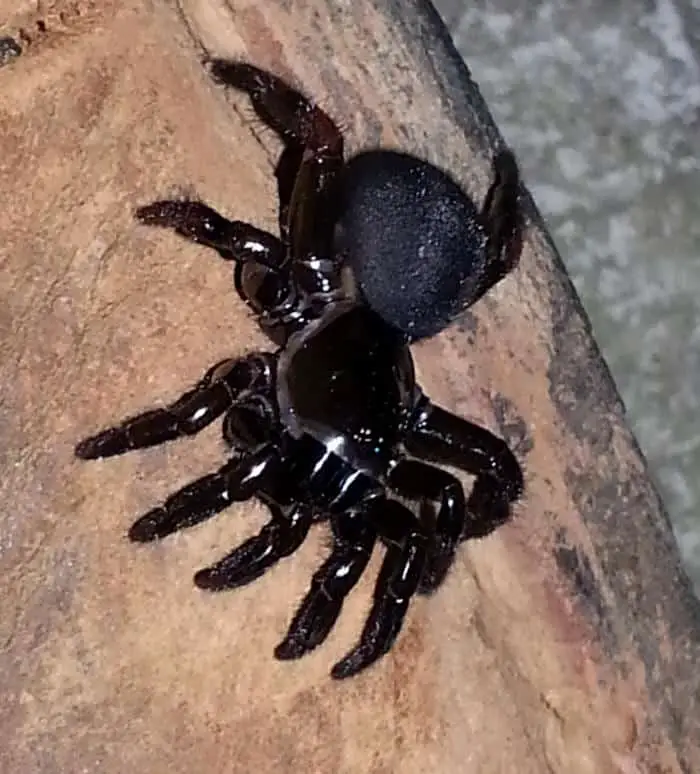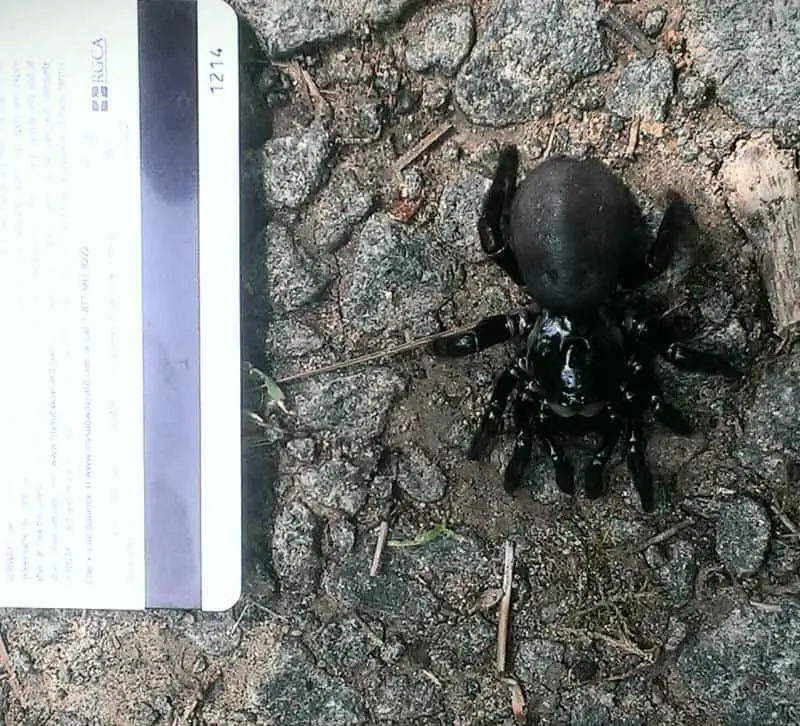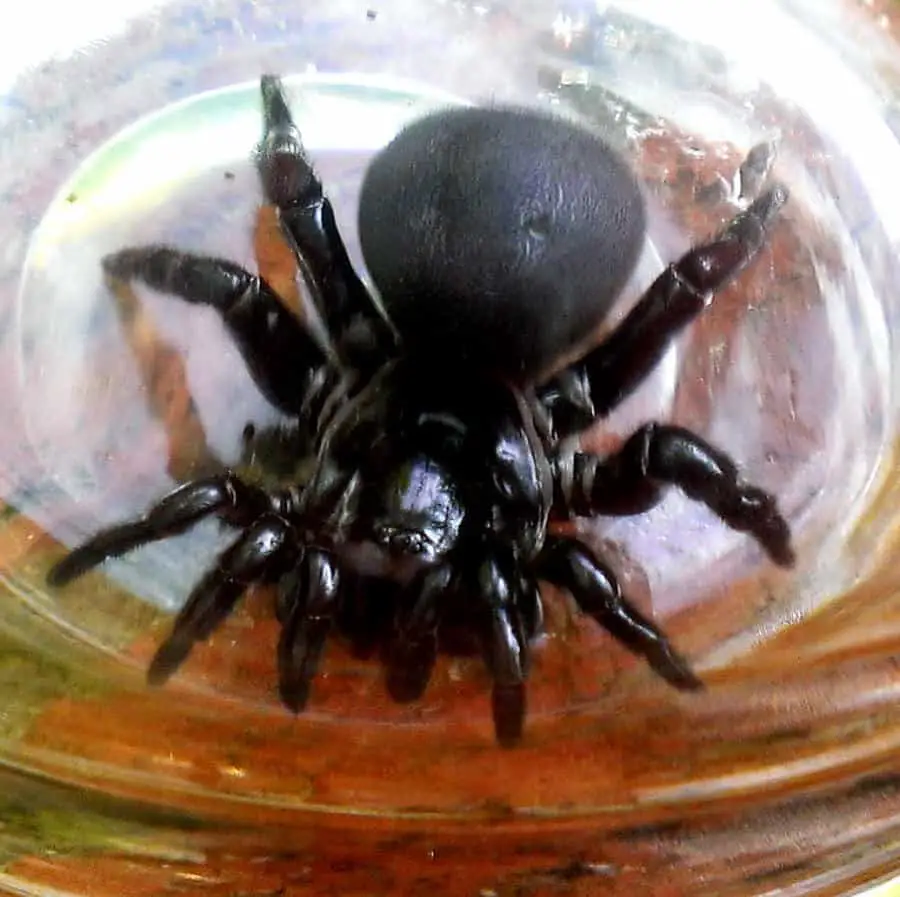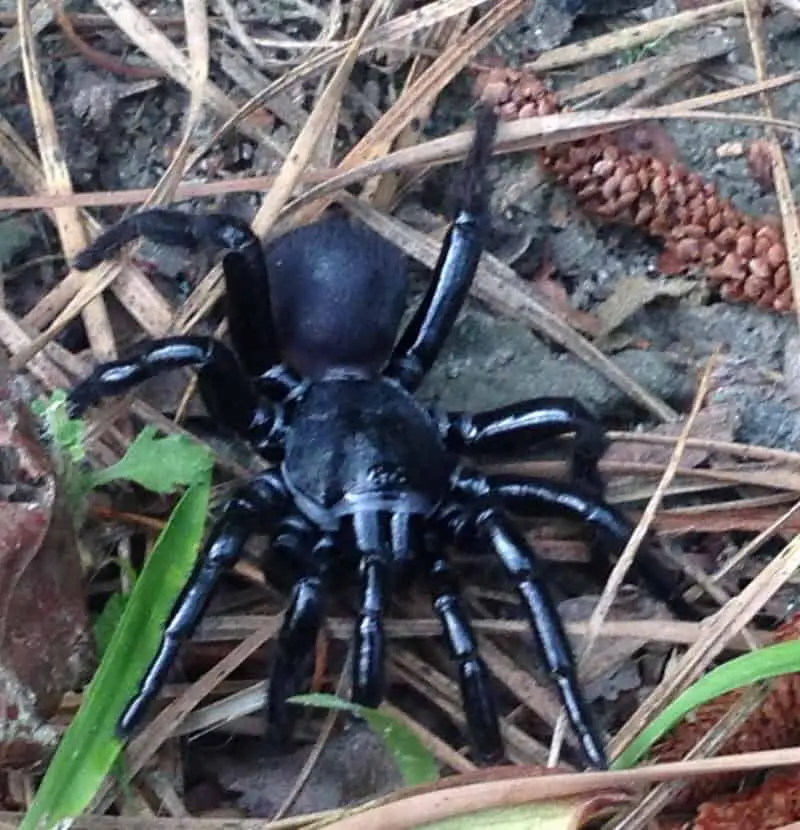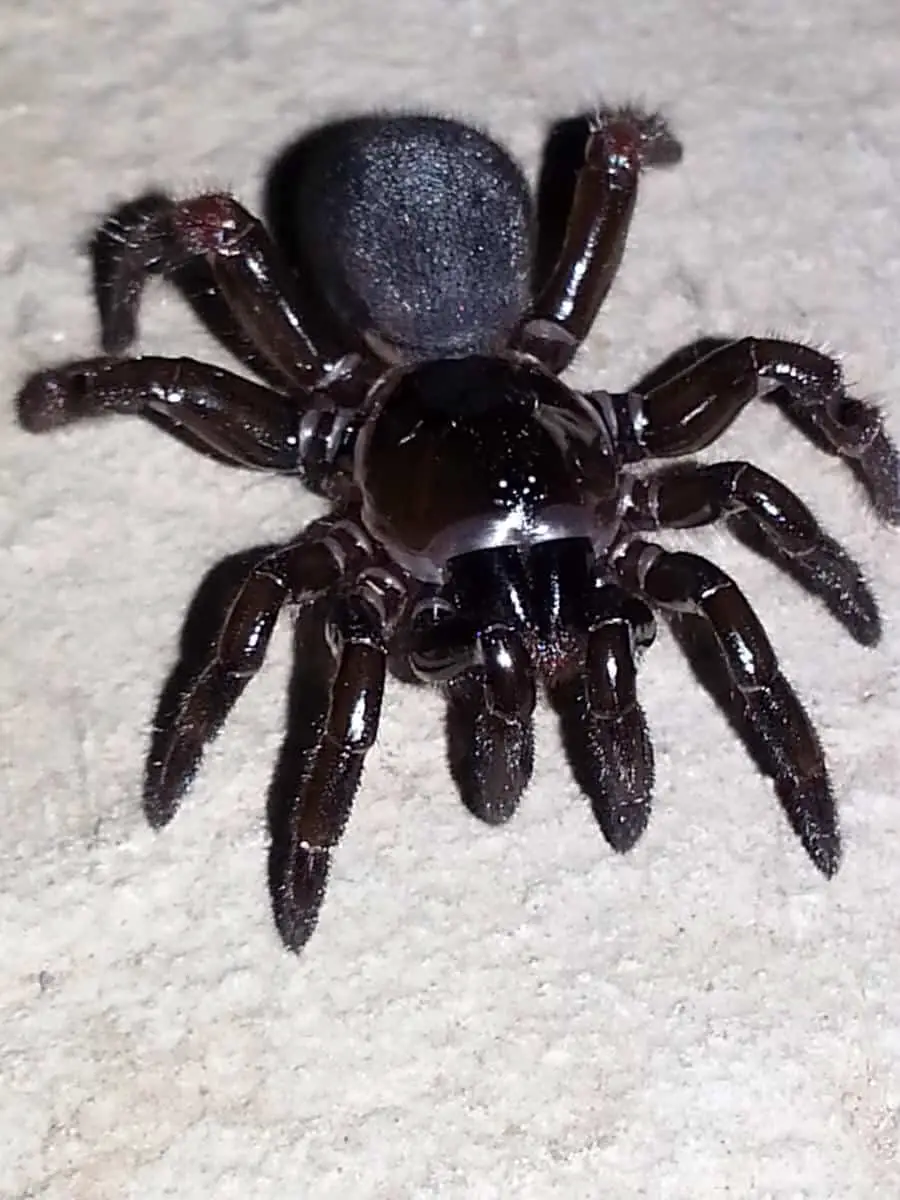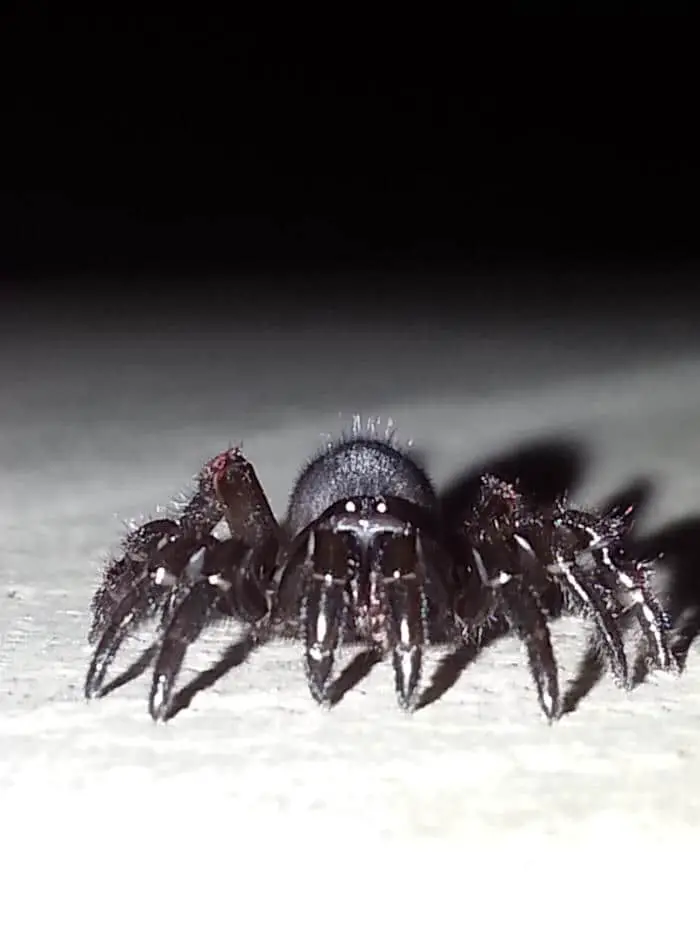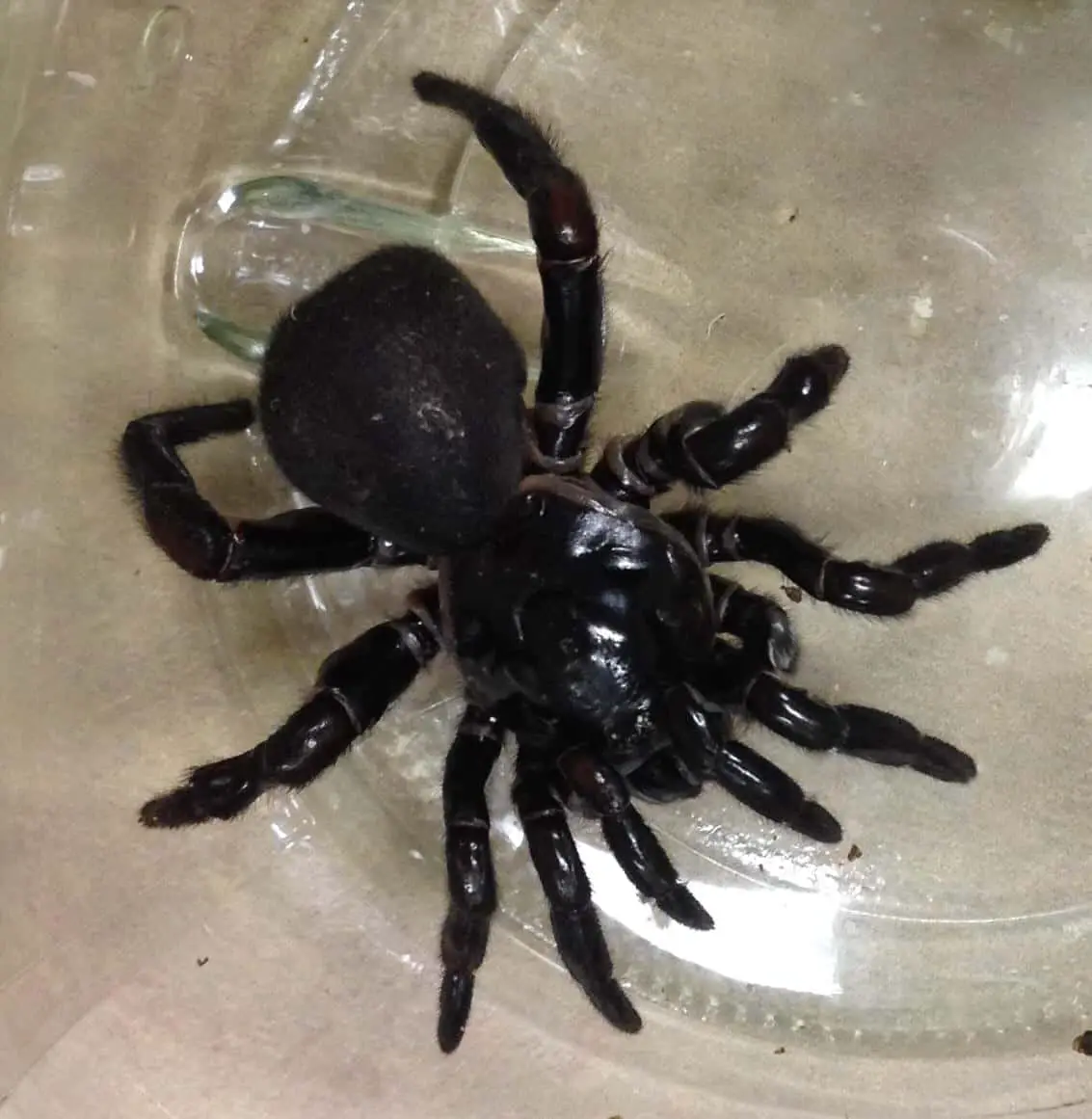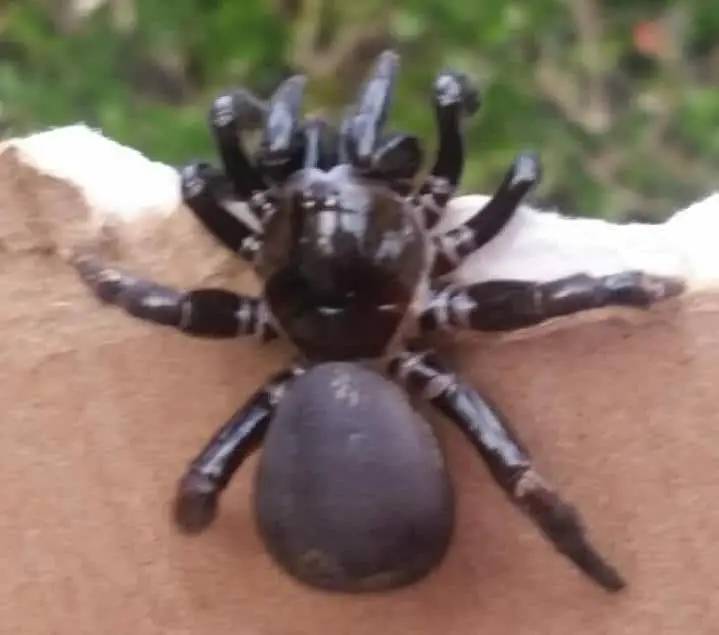The Mouse Spider is a member of the Trapdoor family. Trapdoor spiders include the Funnel-web, Mouse, Whistling, and Curtain-web spiders; they are distinguished by the stocky body, long leg-like palps, and two knee-like lobes to which the fangs join (chelicerae) in front. Most live in burrows with or without trapdoors in the ground, but some live in trees. Trapdoor spiders have powerful chelicerae and four pale patches (the book-lungs) under the abdomen. The correct identification of Trapdoor spiders is often quite complicated. There are two types of Mouse Spider in Australia- the Red Headed Mouse Spider and the Eastern Mouse Spider. The Latin name is Missulena Occatoria. At full size, the Mouse Spider are about the size of a 50c piece or 1 to 3 centimetres.
They have short stocky legs with tiny eyes spread across the head. The male Red Headed Mouse spider (pictured below) has a bright red head and a blue abdomen. The Mouse Spider lives all over Australia but not in Tasmania. It lives in arid conditions as well as rainforests and bushlands. The home of the Mouse Spider is a burrow, oval shaped, of moderate depth and straight down. Female spiders spends all their lives in the burrow. Male spiders wander in Spring to Autumn. The burrow may be plastered with mud and digestive juices then lined with silk. They also live in other parts of the world like the USA.
The females tend to remain in or near their burrows throughout their life, and are sluggish spiders that are rarely aggressive. However M. occatoria females have been found to produce copious amounts of highly toxic venom, which is potentially as dangerous as that of the Sydney Funnel-web Spider. A male M. bradleyi caused a serious envenomation in a child in the Brisbane region. Males wander during early winter, especially after rain. They will assume a threatening posture if disturbed. A bite should be treated the same as a funnel web bite and immediate first aid should be applied. Apply a pressure bandage over the bitten area as high up the limb as possible. Immobilise the victim. If possible, carefully collect spider for positive identification. Do not wash venom off the skin, as retained venom will assist identification.
All photos are copyright to their owners and may not be reproduced without permission.


